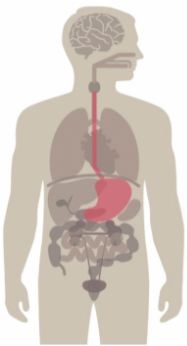So you're having an Upper Endoscopy (EGD)?

An upper endoscopy, also known as esophagogastroduodenoscopy or EGD is a way for your doctor to look at and examine your esophagus, stomach and duodenum (the first part of the small intestine) using a lighted tube with a built-in camera called an endoscope. While the EGD itself only takes about 20 minutes, you will probably spend several hours at the Endoscopy Center.
If you've been experiencing heartburn, problems swallowing or other symptoms of the upper gastrointestinal tract an EGD will help determine the cause. An EGD is more accurate than an x-ray and your doctor can also take a tissue sample (biopsy) during the procedure if needed.
Preparing for Your Procedure:
So that your doctor can examine the stomach, it needs to be empty. This means you won't be able to eat solid food for 8 hours. You may have CLEAR LIQUIDS until 4 hours before your procedure. Your doctor may also ask you to stop taking certain medications. Make sure you arrive about 15 minutes before your appointment time with any paperwork already completed.
During Your Procedure:
The EGD takes between 5 and 20 minutes for most people but you will be at the Endoscopy Center for several hours total. Part of this time is getting you ready and the remainder is time you will need in recovery. Please do not plan on any activities the day of your procedure.
You will lay on your left side and will have an IV put in for your anesthetist to administer sedation. A mouth guard is used to protect your teeth and to keep you from biting down on the endoscope.
Your doctor will view images on a monitor and can also take pictures of these areas for your medical records. If needed, a tissue sample will be taken.
The endoscope is removed and sterilized and you are moved to a recovery area to allow the anesthesia to wear off.
Aftercare:
Once you are fully awake, your doctor will review any initial findings with you. If a tissue sample was taken, it will take several days for the lab to examine it and let the doctor know what was found. Your doctor will be able to tell you when he or she expects the results back. You may need a follow up visit since the EGD is done to find the cause of a symptom and now we want to treat that cause.
You must have someone drive you home. Once home, you can eat normally. You should plan on resting that day but can resume normal activities the next day. Occasionally people will have some bloating, cramping or a sore throat but these symptoms should be mild and disappear rapidly. If these get worse or fail to get better over time, please call our office. Most people are just hungry after their procedure.
